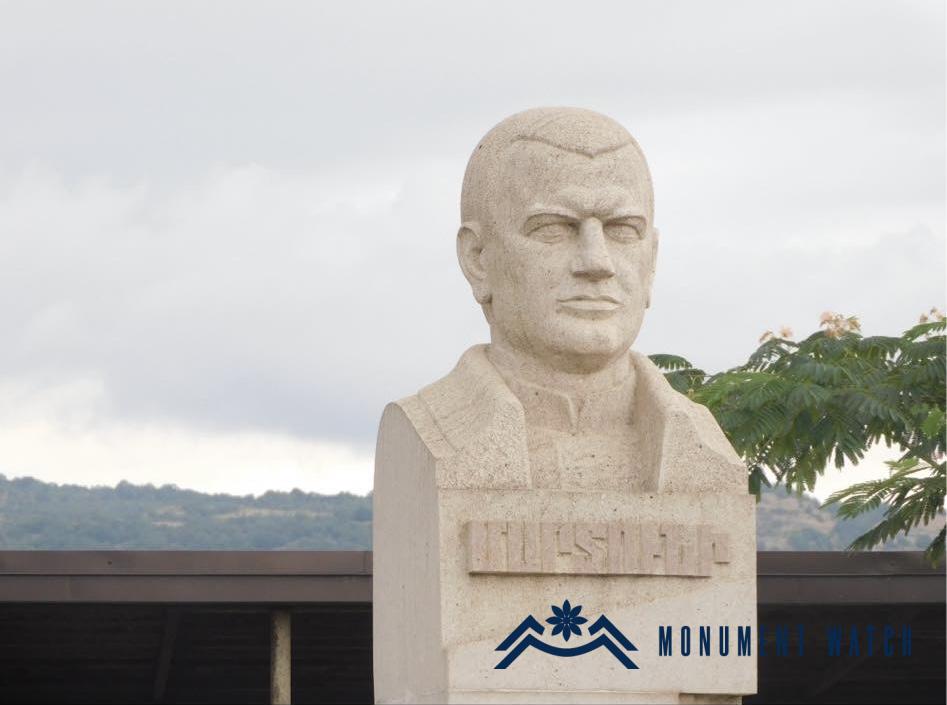Azerbaijan Destroys Monument of Alexander Myasnikyan on Martuni Street, Stepanakert
Azerbaijan, as part of its ongoing program policy aimed at destroying monuments built during the period of independence of the Republic of Artsakh (NKR), demolished the statue of the Soviet statesman, intellectual, and literary critic Alexander Myasnikyan, situated on Martuni Street in Stepanakert.
The unveiling of the statue of Alexander Myasnikyan occurred on September 27, 2014, coinciding with the celebration of Stepanakert City Day. Since 2014, as decided by the city council, Stepanakert City Day has been celebrated on the third Saturday of September. The renowned sculptor Yuri Hovhannisyan is credited as the author of the monument to Alexander Myasnikyan, known by his literary pseudonym Martuni.
It should be noted that this is not the first instance of monument destruction in the city of Stepanakert, in line with the aforementioned policy. Before this, the bust of Admiral Ivan Isakov, the memorial stone of Artsakh hero Ashot Ghulyan, the bust of former Chief of the General Staff of the Defense Army of the Republic of Artsakh, Lieutenant General Anatoly Zinevich, the statue of Stepan Shahumyan in Stepanakert, and the monument of Eagle in the upper park of Stepanakert have all been destroyed.
Our response
According to the 1954 Hague Convention, which prohibits the destruction of cultural assets during armed conflicts, the age or nature of a monument cannot serve as justification for its destruction. The first article of the convention states that cultural value is supranational and universal. It defines cultural value as the movable or immovable heritage of significant importance to all people, including monuments of architecture, art, or history, irrespective of their religious or secular nature. Therefore, heritage should be preserved wherever it is found, regardless of when it was created. According to the logic of the convention, nations determine what constitutes their heritage of "great importance"; in this case, it pertains to the Armenians of Artsakh. Regardless of its appearance or the sentiments it evokes in Azerbaijan, it should be safeguarded. In the 20th century, cultural heritage was typically associated with historical significance from the past. However, in the 21st century, the visual-legal system of heritage acknowledges the values of both the past and the present as part of heritage.
In 1993, starting from September 20, Azerbaijan ratified the Hague Convention of 1954, along with its implementation regulations, and approved the 1954 protocol attached to the convention. Despite this ratification, Azerbaijan continuously violates the convention, along with "The First Hague Protocol for the Protection of Cultural Values in the Occupied Territories," committing numerous crimes not only against Artsakh but against all humanity.

